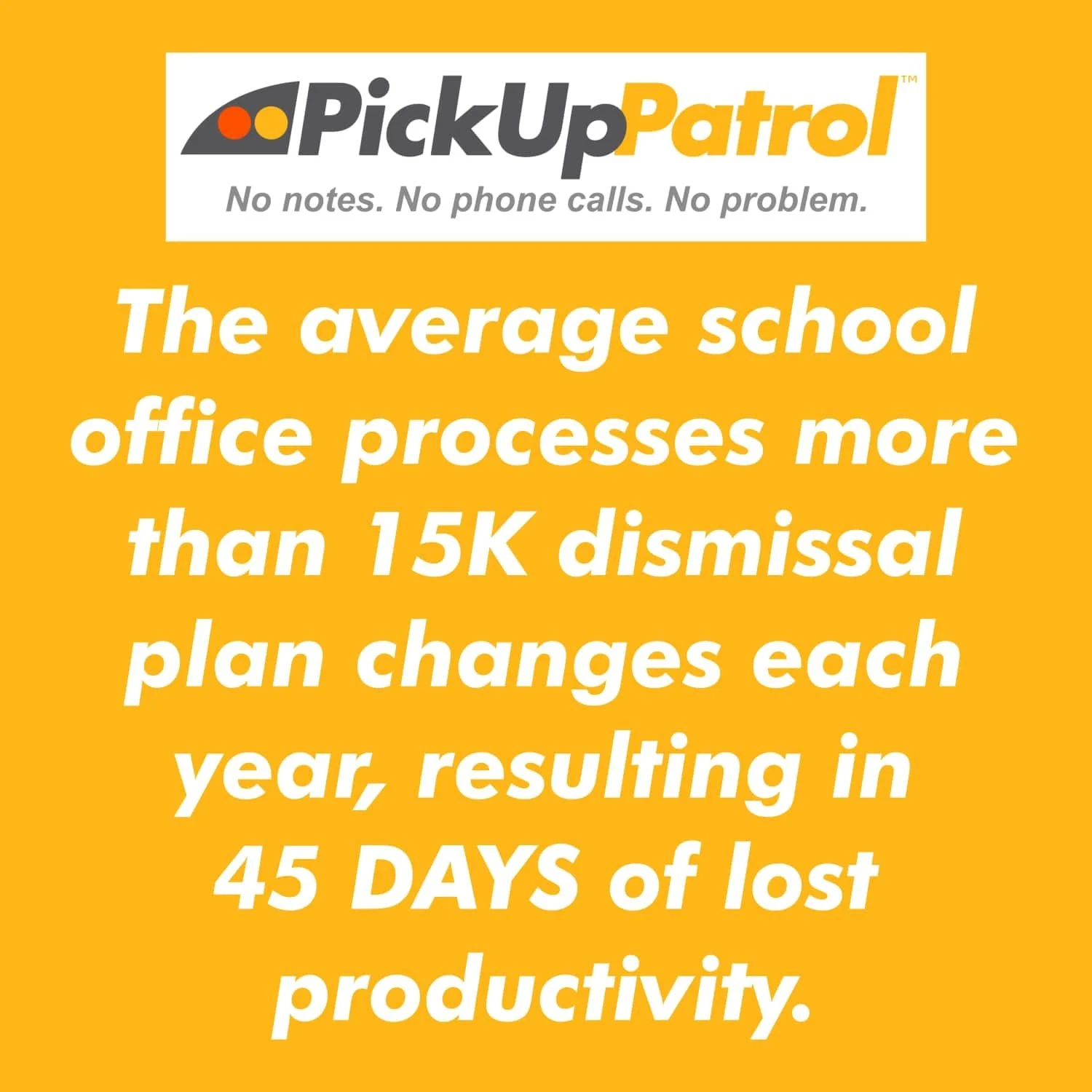The Importance of Automating the School Dismissal Process
Our students deserve a safe, secure, and reliable way for dismissal plan changes to be communicated to their schools.
For as long as there has been school-based education, parents and schools have relied on notes and phone calls to manage the after-school dismissal process. When a parent needs to change their child’s regular dismissal plan, they either call the school to communicate the change to the office staff, or they send a note with their child who (hopefully) delivers the note to the appropriate person at school.
This process is not only inconvenient for parents, but it can be extremely hectic and time-consuming for the school’s office staff. Notes must be manually gathered and compiled into lists for teachers, and phones constantly ring with last-minute changes—adding to end-of-day chaos. In this modern age of technology, parents now manage their families’ lives from their smartphones and computers, and need more convenient ways to communicate with their school about matters pertaining to their children—including school dismissal plan changes.
With new technology, we can keep students safe while also reducing classroom interruptions and chaos in the school office. We can also offer parents the convenience of making secure plan changes from an app on their smartphones.
It’s Not Just About Convenience
While convenience, efficiency, and time-savings are compelling reasons to explore alternatives to notes and phone calls, by far the most important consideration is student safety. It seems that not a week goes by without the media reporting a mishap in a child’s after-school transportation. Notes are lost, forgotten, or there are mix-ups in handling. Children end up on the wrong bus, brought home when they should be sent somewhere else—or even, unfortunately, sent home with the wrong person. Our school secretaries do a heroic job to manage this process and keep children safe day after day, but we are asking them to deal with a 21st century challenge using 19th century tools.
Worse yet, sometimes other, less desirable solutions will be tried in an attempt to solve the problem. Schools may prohibit dismissal plan changes completely, release students to fend for themselves at the end of the school day, or even allow direct texting of plan changes from parents to teachers. These are obviously inappropriate solutions, and they demonstrate definitively that a problem exists. It’s clearly time for a change.
We Have the Technology
The good news is that the technology exists to solve this chaos-inducing problem. With advances in mobile communications, cloud-based technology, and web user interface design focused on simple, highly usable applications, it is possible to provide robust, secure, and simple systems to make dismissal plan changes easier and safer for both parents and schools alike. In other words: There’s an app for that.
In fact, schools take advantage of technology for many aspects of their educational mission. Edtech platforms track student data and grades; offer additional curriculum; manage school lunch funds, fees, and other purchases; alert parents of emergencies; etc. Wise application of appropriate technological solutions can allow schools to focus on their true mission—providing excellent educational opportunities for their students.
Manual dismissal systems get failing grades when compared to technology-based dismissal processes.
By utilizing a technology-based approach to managing dismissals, schools can improve efficiency and make the best use of their limited resources while also providing parents with a convenient tool that gives them great peace of mind.
Parents love the convenience of making changes to their children’s regular dismissal plans from a secure app like PickUp Patrol.
Streamlined, Automated Dismissals
In the end it comes down to this: We’ve relied on children to hand-deliver notes to relay important information between parents and schools since the beginning of school-based education. Isn’t it time for a change? The technology now exists to revolutionize the process of after-school dismissals, and schools owe it to their communities to explore these new options. Embracing a technological solution to this age-old problem offers many benefits, including better use of time and resources for schools, improved parent satisfaction, and most importantly—a safer, more reliable way to ensure that students get where they need to be at the end of every school day.
School principals all over the country enjoy peace of mind when using an automated dismissal system such as PickUp Patrol.
What does your school do to manage its dismissal process? Could it benefit from an automated process that applications such as PickUp Patrol offer? We’d love to hear about what you do now, what the pitfalls of that system may be, and how an automated system could benefit your community in the comments below.






